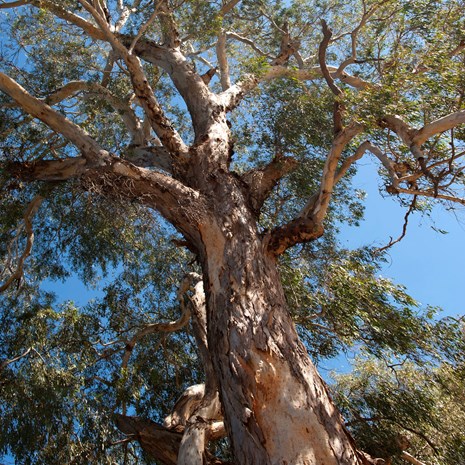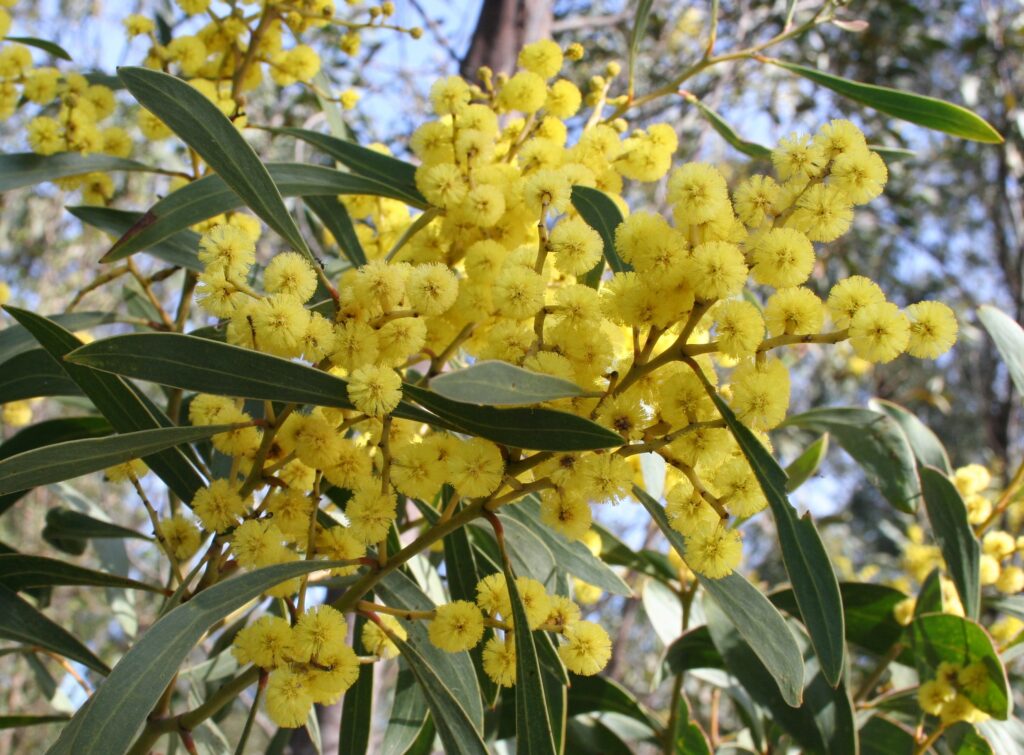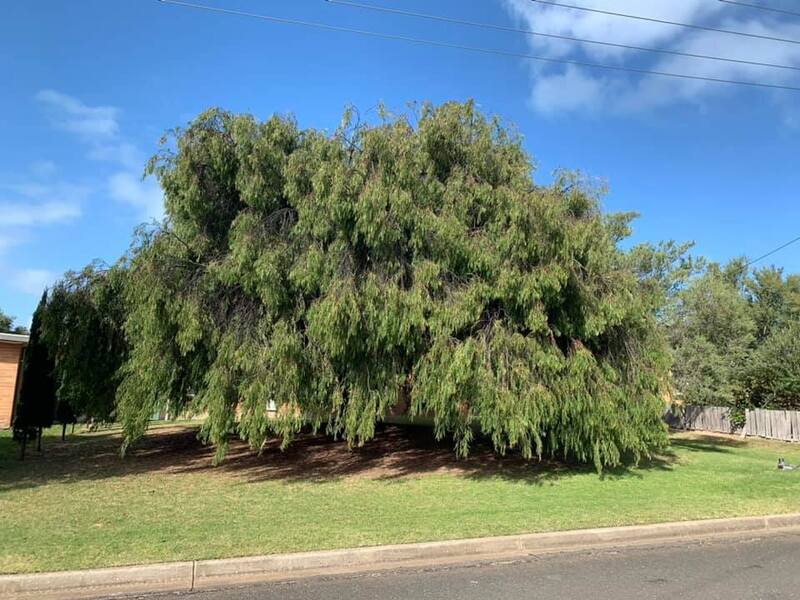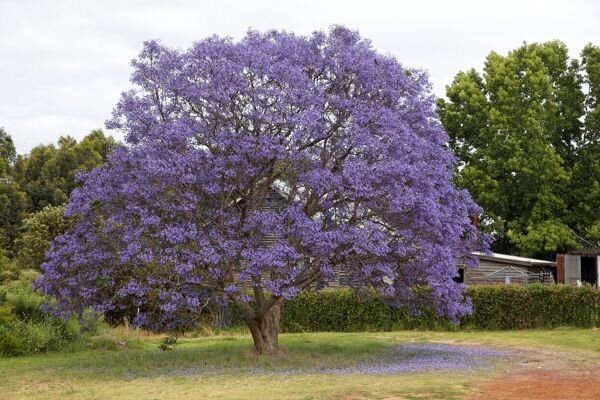Month: November 2022
5 Most Common Trees in Australia
Australia has always been home to various flora and fauna. As a nation that is abundant with wildlife species and different trees and plants from the fauna kingdom, there are bound to be species that are quite more popular and special amongst people. There are a few that really made their name in the landscape scenery across Australia. If you feel like growing a green thumb, these are the most common trees around Australia:
River Red Gum (Eucalyptus camaldulensis)

As a member of the Eucalyptus family, the River Red Gum is one of the most popular trees around. This white or cream-coloured trunk tree produces flowers and fruits. Its bark is often composed of rough slabs.
It is usually lined up along bodies of water and big spaces, as it can reach about as high as 20 metres. Like a tree that can reach more than a century in age and can be found near bodies of water, River Red Gum is a good potential home to many wildlife.
Golden Wattle (Acacia pycnantha)

This tree just might be the most known trees around Australia. As the bearer of Australia’s national flower, the golden wattle, this tree’s part in Australia’s identity is recognised everywhere.
If you want a dark-brown to smooth grey bark around that can grow up to 8 metres from the ground, the Golden Wattle is perfect for you. You can showcase the national flower by having this tree and watch it bloom from July to November every single year.
White Mulberry (Morus alba)
Another one of the most popular trees around Australia is the White Mulberry. Its leaves are known for being a good source of feed for silkworms.
Other countries also make the white mulberry leaves into tea. It also produces berries, the white mulberry, which is also a good treatment for diabetes. These trees have the ability to grow up to 20 metres in height. This makes it good in big areas and perfect as a source of shade in hot days under the sun.
Peppermint (Agonis flexuosa)

Also known as the Willow Myrtle or the Peppermint tree, this tree grows usually smaller than the usual tall trees known around Australia.
It can only grow less than 10 metres and grows in a weeping habit, meaning the branches grow in a downward direction. This tree blooms small white flowers from August to December. If you’re new to landscaping and gardening, the Peppermint tree is perfect for you as it is low maintenance and
Jacaranda (Jacaranda mimosifolia)

This beautiful tree really leaves an impression in any scenery. The Jacaranda tree grows beautiful lilac shade flowers and leaves a very fragrant smell in the breeze.
This tree can also grow as tall as 30 metres in height. The more mature Jacaranda trees can also survive in really cold climates but most Jacarandas flourish well in warm weather. You can witness the beauty of Jacarandas from late spring to early summer season.
Conclusion
There are plenty of trees to choose from, should you choose to grow one. As Australia is home to many kinds and families of trees, there are plenty of methods and ways to grow your trees properly.
Growing your own tree might seem like a very heavy responsibility to you, as such, we are here to help you with that regard. We offer tree services for you and your trees. The advantages of growing and maintaining your trees far outweigh any sort of hassle.
We are Trees Down Under and we are the solution for your Sydney tree removal needs. We have been here for more than 20 years and counting. All you need to do is contact us and we can be with you in your journey of growing the most beautiful trees and shrubs native to the country.
Call us at 0475 463 597 or send us an email at info@treesdownunder.com.au
Types of Garden Waste and How to Handle Them
All kinds of plants bestow a charming and picturesque for your garden in unique ways. But achieving your ideal garden comes with a high price to work for, including your daily waste management.
Occasionally, outdoor gatherings usually take place in your garden, making it ideal for fun activities and the usual Sydney afternoon coffee. This is one of the reasons why people exert effort to maintain a safe and clean garden, aside from the physical benefit it gives.
However, it’s tiring when you can’t keep up handling large branches and rotting trunks. Aside from the extra miles you need in removing garden waste, it’s also financially challenging to maintain your impeccable dream garden.
Above all these issues, there are efficient ways to deal with garden waste. Knowing the type of rubbish in your yard, you can implement effective recycling and repurposing methods. Also, how to handle the wastes allowed or forbidden in your bins.
Types of Garden Wastes
Generally, there are two primary categories for garden waste: recyclables, biodegradable, and unwanted materials in your garden. Here are the two types of garden waste:
Garden Organics
Most of the waste in your garden is the outgrowth of foliage or cuttings of plants and weeds. Aside from that, you deal with the prunings of old large branches and messes of garden cleanups. Among the common organic wastes include:
- Lawn clipping and cuttings
- Branches and twigs
- Weeds
- Prunings from bushes and trees
- Wood chips, loose barks
- Leaves and flowers
- Windfall fruits and vegetables
Solid Rubbish
Apart from the debris from vegetation clippings and bushes, there are other solid wastes present in your garden. This includes the unwanted to the recyclable ones:
- Ceramics and glass
- Metals, concretes, bricks
- Discarded pots and seed trays
- Outdoor furniture (e.g. swings, chairs, fence, etc.)
- Unwanted garden ornaments
- Excess soil, dirt
How to Handle Garden Waste
When you think of garden waste, you can suggest that most are organic and compostable. However, garbage collectors don’t accept all of the organic debris in your household. For example, fruits and vegetable scraps from your garden are not allowed in the curbside bins.
Furthermore, green wastes such as large branches and rotting trees can be difficult to handle. You cannot throw branches more than 100 mm in diameter inside your bins.
There are many things to consider in disposing of your garden waste. But here are some ideas on how to handle the massive pilings of rubbish in your garden and yards:
Sort It Out
The best way to properly handle garden waste is to sort out what can and cannot go inside your bin. Avoid putting in too much green waste; large branches should not exceed 100mm in diameter.
On top of that, there are weight restrictions when throwing green waste. When dealing with heaps of leaves and other garden waste, the trash can spill from the bins or be too big and bulky to place in the containers. If that happens, you’ll need another creative method to solve garden waste issues.
Additionally, as a preventative method, it’s a good idea to choose a reliable Sydney house cleaning company to perform home cleans regularly. Doing so lets your household keep waste from accumulating while keeping your space spotless.
Composting Organic Wastes
After sorting out extra leaves and grass cuttings in your yard, composting is the next best step. Composting is the best way to manage the garden, waste-combining it with food scraps in the compost.
Also, you can add fallen leaves, mowed weeds and old bedding plants. All you need to ensure is that your pile has enough moisture and air can flow through it. Over time, your waste turns into mulch that is useful to replenish the nutrients in your soil garden.
Proper Lawn Care
Reducing waste production is another great way to solve your garden waste issue. When lawn covers a more significant portion of your garden, then it’s reasonable it produces so much of your garden waste. Thus, your lawn area is the right subject for reducing the waste production.
Proper care for lawns includes finding suitable grass species in your garden. Aside from that, ensure you only mow one-third of the grass to reduce the heaps of trimmings you need to handle.
Practice Grasscycling
Not many people know what grasscycling is. Grasscycling is another proper lawn care that involves recycling and composting the grass clippings on your lawn. Leaving the clippings on the ground can create mulch, providing an excellent nutrient supply to your garden.
Try Vermicomposting
Vermicomposting is another effective method for your composting. This process creates mulch faster with the help of worms. Also, doing this requires smaller containers and is helpful when you don’t have enough space for composting.
Most importantly, vermicomposting is useful for people generating so much food waste. The combination of green waste, kitchen scrap and shredded paper creates mulch faster that would surely benefit your pants.
Donate Garden Waste
Some companies accept your organic garden waste if you can’t do the first series of methods above. But you must follow the rules and regulations, so these companies take your garden waste without any problem.
Reuse Some Waste
Repurposing some of your garden waste can surely reduce garbage production. Some prunings or twigs are suitable for lighting a barbecue or wood burner. Also, some solid rubbish such as ornaments and metals can help you create an industrial garden or decorate your entire yard.
Hire Skip Bins
There are tendencies that your garden waste won’t fit in the council’s local bins. Your solution is hiring skip bins or private companies to care for your garden problems.
Conclusion
Garden waste is what makes creating a perfect garden a challenge. But there are numerous ways to handle it such as sorting, composting, grasscycling and many more. With a creative mind and enough environmental care, you can find ways to reduce garden waste.
Moreover, a well-kept garden can make your family and neighbourhood safe from falling branches and leaning trees. After all the effort, you’re rewarded with a safe and tidy garden giving you a positive vibe and peace of mind.
Here at Trees Down Under Sydney, we provide the best green waste removal service to meet all your garden waste disposal needs. We work around the clock to ensure your garden is spotless from trash and debris. We will make sure that your ideal garden is as pristine as ever.
Call us at 0475 463 597, and we’ll be on our way in no time.
How To Properly Dispose Of A Fallen Tree
Trees are massive, heavy plants that are supposed to be upright and sturdy. However, due to some circumstances, trees may be unable to withstand external factors and collapse.
There are many reasons why a tree suddenly falls, and here are a few of them:
- Extreme environmental conditions such as storms, strong winds, hurricanes, tsunamis, and the like can cause trees to become uprooted.
- Tree diseases from fungal infection, pest infestation, and damage to the roots, trunk, and branches can either cause uprooting or break off the tree.
- Trees with root problems like a shallow root system, root decay, and unsteady ground may also end up falling.
- Pruning and tree cutting has the goal of cutting trees or tree parts which can result in a fallen tree.
- Old-aged trees are brittle and may easily topple over.
How to Get the Most Out of a Fallen Tree
As mentioned, trees are heavy and bulky. So, when a tree falls, it may cause unwanted injuries to people and pets and damage properties where it lands. Aside from that, trees may also be a challenging piece to clean and dispose of. However, you can still make use of fallen trees such as by:
1. Turning your tree into firewood
Firewood is an expensive commodity. So, if you have a fallen tree at your residence, you might want to cut them into chunks to become firewood for your fireplace. You can also sell them or use them for your backyard campfire ventures.
2. Using trees as lumber and furniture
Some varieties of trees are strong and sturdy enough to serve as furniture. Mature trees like cherry, walnut, and redwood, still in good condition, can be cut into lumber and turned into wooden furniture pieces. They can also be saved for later use in wood crafts and projects.
3. Upcycling trees for landscaping
Fallen trees on the ground seem disastrous. However, you can change that idea upside down by upcycling tree trunks and branches. You can transform these tree parts into valuable statement pieces for your garden landscape.
A tree trunk can be turned into a wooden bench, stumps can serve as table stands or seats, and large tree limbs can become rustic fence additions for a more attractive and eye-catching garden.
How to Properly Dispose of a Fallen Tree
If you want to get rid of the fallen tree in your yard, here are a few steps to dispose of it properly.
1. Do-It-Yourself Tree Disposal
Trees are considered green or yard waste. So, before you ready them for disposal, ensure that your area has a yard-waste recovery facility. Then, you can hire a truck or a dumpster to collect the massive chunk of a tree in your yard, and then you can clean up the leftover tree debris, such as the leaves, branches, and twigs.
Afterwards, you can have the green waste hauled to the reclamation facility.
2. Tree Removal Services
Disposing of a fallen tree is an arduous and hazardous task. Trees are heavy and big, so carrying them alone would be difficult. Thus, doing the job yourself may not be a good idea.
At Trees Down Under, we understand the difficulties and risks of removing a fallen tree. That’s why we are here to take all the hassles and dangers of cutting the tree, carrying it, and transporting it away from you. With over 30 years of service in Sydney, not once did we fail to meet the standards of quality, efficient, and safe Sydney tree removal services.
Our team of reliable and qualified tree fellers can handle trees of any size in your area. We also provide 24-hour emergency tree removal services across Sydney. Feel free to call us anytime at 0475 463 597 for a free quote.
